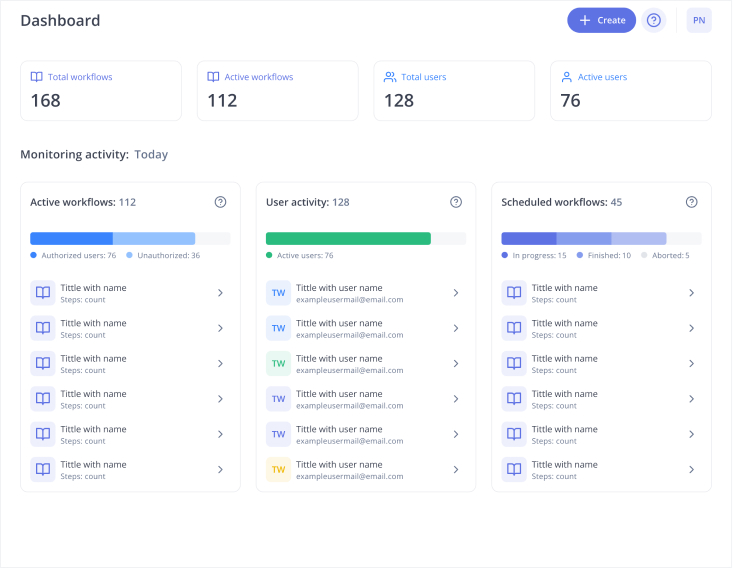Workplace Safety
Workplace safety is more than just a checklist of regulations or a line item on a compliance report —it’s an essential component of a successful and sustainable organization. It encompasses a range of practices, behaviors, and policies designed to protect workers from potential hazards and ensure a safe working environment. In today’s business climate, where health and well-being are front and center, fostering a strong safety culture isn’t just ethical — it’s smart business.
What is Workplace Safety
Workplace safety refers to the condition of a work environment that is free from physical, chemical, and biological hazards that could harm employees. It is a shared responsibility among employers, employees, supervisors, and even clients. A safe workplace protects not only the people within it but also the quality of service, productivity, and reputation of the business.
The Occupational Safety and Health Administration (OSHA) sets the standard for safety and health regulations in the United States, but similar agencies exist globally. Compliance with these regulations is non-negotiable; it’s the baseline from which companies must build their safety measures.
Employers and Employees
Employers are legally and morally obliged to provide a safe working environment. This means training programs, health programs, risk assessments, and providing workers with the right tools and PPE. Employees also have a role to play. They must follow the safety policy rules, report safety concerns and participate in workplace safety training.
Workplace safety is a shared responsibility that requires ongoing communication, collaboration and trust between all parties. When everyone buys into a safety culture the incidence of workplace injuries and incidents drops significantly.
Identifying Hazards
Understanding and identifying workplace hazards is the first step in preventing accidents. Hazards can be categorised into:
- Physical Hazards: Unsafe equipment, noise, slips and falls
- Chemical Hazards: Exposure to harmful substances
- Biological Hazards: Bacteria, viruses, mold
- Ergonomic Hazards: Poor workstation setup, repetitive motion
- Psychosocial Hazards: Stress, harassment, fatigue
By doing regular safety audits and assessments employers can identify and address these hazards before they become accidents or incidents.
Building a Safety Culture
A positive safety culture is key to long term safety improvements. A strong safety culture exists when safety is embedded in the organisation from top to bottom. This means safety over speed or convenience and that cutting corners has disastrous consequences.
Supervisors play a big role in building this culture. They set the tone, lead by example and ensure safety protocols are followed. Safety meetings, open communication and continuous improvement should be part of daily operations.
The Impact of Safety Training
Safety training is one of the most effective ways to reduce risk and prevent workplace accidents. It ensures employees are aware of safety hazards and know how to respond. Effective safety training includes:
- Emergency procedures (e.g. fire drills)
- Equipment usage and maintenance
- Hazardous materials handling
- Incident reporting
Training should be updated regularly to reflect changes in laws, equipment and industry standards. Repetition and reinforcement is key to keeping safety knowledge fresh and actionable.
Safety Concerns and Incidents
When employees raise safety concerns they should be listened to and acted on. Ignoring them increases risk and erodes trust in the organisation. Companies should have clear channels for reporting without fear of retribution.
In the event of a safety incident a thorough investigation should be conducted to identify the root cause and implement corrective actions. This prevents recurrence and shows commitment to continuous improvement.
Preventing Accidents and Injuries
Preventing accidents and injuries is the ultimate goal of any safety program. This requires a mix of proactive and reactive measures:
- Regular risk assessments
- Engineering controls (e.g. ventilation systems)
- PPE
- Safety rules and procedures
Workplace injuries have direct and indirect costs. Direct costs are medical expenses and workers comp. Indirect costs (lost productivity, administrative burden, damaged morale) can be bigger.
Health Programs and Administration
Comprehensive health programs go beyond accident prevention. They include initiatives that promote overall well-being, such as mental health support, physical fitness programs and access to healthcare services.
Administration of these programs should be seamless and employee centric. When health is seen as a priority it boosts morale, reduces absenteeism and increases productivity.
Legal and Regulatory
Laws and regulations exist to enforce workplace safety standards and protect workers. OSHA is the main one in the US but many countries have their own regulations and enforcement bodies. Compliance is not optional – it’s a legal requirement with penalties for non compliance.
Understanding and keeping up with these laws is crucial for employers. Regular audits, internal reviews and compliance training helps companies stay on track and avoid legal issues.
Resilience and Future Proofing
In a changing world being a resilient organisation is more important than ever. Workplace safety is part of that resilience. From pandemics to natural disasters having robust safety and health protocols means business can continue with minimal disruption.
Investing in safety also prepares you for the future. As industries evolve and new risks emerge organisations with a mature safety culture will adapt quicker and better.
Conclusion: Safety as a Top Priority
Workplace safety should never be an afterthought – it must be a top priority. Creating a safe working environment, building a positive safety culture and continuous improvement through training and feedback loops is key to long term success.
Employers, employees and administrators must all buy into safety and health as core values not just regulatory boxes to tick. When safety is seen as a shared responsibility and part of business strategy the benefits go way beyond injury prevention. They touch every part of the organisation – from operational efficiency and employee wellbeing to brand reputation and financial performance.
In the end protecting people means protecting business. And that’s something no organisation can afford to ignore.
Simplify the way people work and learn at the frontline
See the industry-leading how-to platform in a 30-minute live demo.
Learn more
